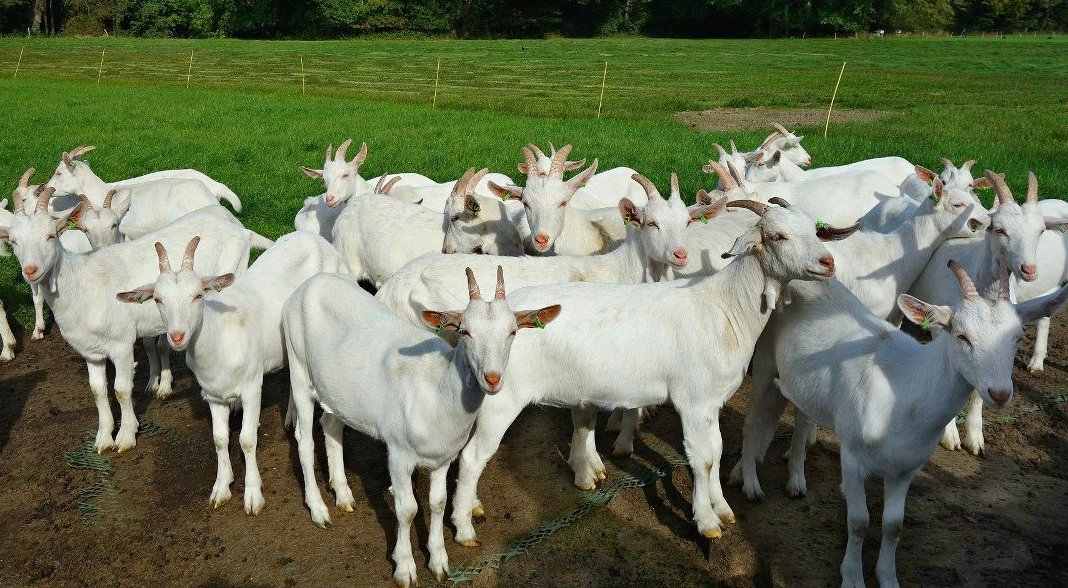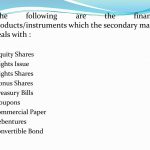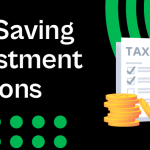
Before starting a Goat Farming Business you may think creating a Business plan which is a time-consuming process. For most entrepreneurs it is, but for you, it won’t be since we’re here to help. We have the experience, resources, and knowledge to help you create a great business plan.
In this article, you will learn some background information on why business planning is important. Then, you will learn how to write a goat farming business plan step-by-step so you can create your plan today.
Business Plan
A business plan provides a snapshot of your commercial goat farming business as it stands today, and lays out your growth plan for the next five years. It explains your business goals and your strategies for reaching them. It also includes market research to support your plans.
Need for a Business Plan
If you’re looking to start a goat business or grow your existing goat farm, you need a business plan. A business plan will help you raise funding, if needed, and plan out the growth of your goat business to improve your chances of success. Your goat farming business plan is a living document that should be updated annually as your company grows and changes.
Funding for Goat Farms
With regard to funding, the main sources of funding for a goat farming business are personal savings, credit cards, bank loans, and angel investors. When it comes to bank loans, banks will want to review your business plan and gain confidence that you will be able to repay your loan and interest. To acquire this confidence, the loan officer will not only want to ensure that your financials are reasonable, but they will also want to see a professional plan. Such a plan will give them the confidence that you can successfully and professionally operate a business. Personal savings and bank loans are the most common funding paths for goat farms.
Writing a Business Plan for a Commercial Goat Farm
If you want to start a goat farming business or expand your current one, you need a business plan. The guide below details the necessary information for how to write each essential component of your goat farming business plan.
Executive Summary
Your executive summary provides an introduction to your business plan, but it is normally the last section you write because it allows for a summary of each key section of your plan.
The goal of your executive summary is to quickly engage the reader. Explain to them the kind of commercial goat farming business you are running and the status. For example, are you a startup, do you have a goat-farming business that you would like to grow, or are you operating an established goat-farming business that you would like to sell?
Next, provide an overview of each of the subsequent sections of your plan.
- Give a brief overview of the goat farming industry.
- Discuss the type of goat farming business you are operating.
- Detail of your direct competitors. Give an overview of your target customers.
- Provide a snapshot of your marketing strategy. Identify the key members of your team.
- Offer an overview of your financial plan.
Company Overview
In your company overview, you will detail the type of goat business you are operating. For example, you might specialize in one of the following types of commercial goat farming businesses:
- Milk and dairy production: Involves raising dairy goats for their goat milk and other dairy products such as cheese and yoghurt.
- Meat production: Involves raising and selling goats for their goat meat.
- Fleece farm: Involves raising goats for their fur to be spun into yarn.
- Miniature goat farm: Involves raising goats to be sold as pets.
In addition to explaining the type of goat farming business you will operate, the company overview needs to provide background on the business. Include answers to questions such as:
- When and why did you start the business?
- What milestones have you achieved to date? Milestones could include the number of customers served, the number of goats sold and reaching x amount in revenue, etc.
- Your legal business: Are you incorporated as an S-Corp, An LLC, A sole proprietorship, Explain your legal structure here.
Industry Analysis
In your industry or market analysis, you need to provide an overview of the goat farming industry. While this may seem unnecessary, it serves multiple purposes.
- First, researching the goat farming industry educates you. It helps you understand the market in which you are operating.
- Secondly, market research can improve your marketing strategy, particularly if your analysis identifies market trends.
- The third reason is to prove to readers that you are an expert in your industry. By conducting the research and presenting it in your plan, you achieve just that.
The following questions should be answered in the industry analysis section of your goat farm business plan:
- How big is the commercial goat farming industry (in amount)?
- Is the market declining or increasing?
- Who are the key competitors in the market?
- Who are the key suppliers in the market?
- What trends are affecting the industry?
- What is the industry’s growth forecast over the next 5- 10 years?
- What is the relevant market size? i.e. how big is the potential target market for your goat farm? You can extrapolate such a figure by assessing the size of the market in the entire country and then applying that figure to your local population.
Customer Analysis
The customer analysis section of your goat farm business plan must detail the customers you serve and/or expect to serve. The following are examples of customer segments: individuals, schools, families, and corporations.
As you can imagine, the customer segment(s) you choose will have a great impact on the type of goat farm you operate. Clearly, individuals would respond to different marketing promotions than corporations, for example.
Try to break out your target customers in terms of their demographic and psychographic profiles. With regards to demographics, include a discussion of the ages, genders, locations, and income levels of the potential customers you seek to serve.
Psychographic profiles explain the wants and needs of your target customers. The more you can recognize and define these needs, the better you will do in attracting and retaining your customers.
Competitive Analysis
Your competitive analysis should identify the indirect and direct competitors your business faces and then focus on the latter.
- Direct competitors are other goat farms.
- Indirect competitors are other options that customers have to purchase from that aren’t directly competing with your product or service. This may include other types of meat farms, meat and dairy alternatives, pet stores, or other types of fibres depending on which type of goat farm you decide to operate. You need to mention such competition as well.
For each such competitor, provide an overview of their business and document their strengths and weaknesses. Unless you once worked at your competitors’ businesses, it will be impossible to know everything about them. But you should be able to find out key things about them such as
- What types of customers do they serve?
- What type of goat farm are they?
- What is their pricing (premium, low, etc.)?
- What are they good at?
- What are their weaknesses?
With regard to the last two questions, think about your answers from the customers’ perspective. And don’t be afraid to ask your competitors’ customers what they like most and least about them.
The final part of your competitive analysis section is to document your areas of competitive advantage. For example:
- Will you make it easier for your customers to acquire your products?
- Will you offer products or services that your competition doesn’t?
- Will you provide better customer service?
- Will you offer better pricing?
Think about ways you will outperform your competition and document them in this section of your plan.
Marketing Plan
Traditionally, a marketing plan includes the four P’s: Product, Price, Place, and Promotion. For a commercial goat farming business, your marketing strategy should include the following:
- Product: In the product section, you should reiterate the type of goat farm that you documented in your company overview. Then, detail the specific products or services you will be offering. For example, will you sell milk, cheese, meat, fibres, or goats?
- Price: Document the prices you will offer and how they compare to your competitors. Essentially in the product and price sub-sections of your plan, you are presenting the products and/or services you offer and their prices.
- Place: Place refers to the site of your goat farm. Document where your company is situated and mention how the site will impact your success. For example, is your goat farm business located in a rural area with access to a highway, in a suburb near your target customer base, or in your backyard? Discuss how your site might be the ideal location for your customers.
- Promotions: The final part of your goat farming marketing plan is where you will document how you will drive potential customers to your location(s). The following are some promotional methods you might consider:
- Advertise in local papers, radio stations and/or magazines
- Reach out to websites
- Distribute flyers
- Engage in email marketing
- Advertise on social media platforms
- Improve the SEO (search engine optimization) on your website for targeted keywords
Operations Plan
While the earlier sections of your business plan explained your goals, your operations plan describes how you will meet them. Your operations plan should have two distinct sections as follows.
Everyday short-term processes include all of the tasks involved in running your goat farm, including answering calls, caring for your goats, meeting with customers, billing and collecting payments, etc.
Long-term goals are the milestones you hope to achieve. These could include the dates when you expect to acquire your xth customer, or when you hope to reach x in revenue. It could also be when you expect to expand your commercial goat farming business to a new region.
Management Team
To demonstrate your goat farm’s potential to succeed, a strong management team is essential. Highlight your key players’ backgrounds, emphasizing those skills and experiences that prove their ability to grow a company. Ideally, you and/or your team members have direct experience in managing goat farms. If so, highlight this experience and expertise. But also highlight any experience that you think will help your business succeed.
Financial Plan
Your financial plan should include your 5-year financial statement broken out both monthly or quarterly for the first year and then annually. Your financial statements include your income statement, balance sheet, and cash flow statements.
Income Statement
An income statement is more commonly called a Profit and Loss statement or P&L. It shows your revenue and then subtracts your costs to show whether you turned a profit or not.
In developing your income statement, you need to devise assumptions. For example, will you have 30 goats on your farm, and will each goat produce an average of 3 quarts of milk per day? And will sales grow by 2% or 10% per year? As you can imagine, your choice of assumptions will significantly impact the financial forecasts for your business. As much as possible, conduct research to root your assumptions in reality.
Balance Sheets
Balance sheets show your assets and liabilities. While balance sheets can include much information, try to simplify them to the key items you need to know about. For instance, if you spend $50,000 on building out your goat farm, this will not give you immediate profits. Rather it is an asset that will hopefully help you generate profits for years to come. Likewise, if a lender writes you a cheque for $50,000, you don’t need to pay it back immediately. Rather, that is a liability you will pay back over time.
Cash Flow Statement
Your cash flow statement will help determine how much money you need to start or grow your business and ensure you never run out of money. What most entrepreneurs and goat farmers don’t realize is that you can turn a profit but run out of money and go bankrupt.
When creating your Income Statement and Balance Sheets be sure to include several of the key costs needed in starting or growing a goat farming business:
- Cost of farming equipment and supplies
- Payroll or salaries paid to staff
- Business Insurance
- Taxes
- Other start-up expenses (if you’re a new business) like legal expenses, permits, computer software, and equipment
Appendix
Attach your full financial projections in the appendix of your plan along with any supporting documents that make your plan more compelling. For example, you might include your farm location lease or photos of your farm and goats.
Summary
Writing a business plan for your goat farm is a worthwhile endeavour. If you follow the template above, by the time you are done, you will truly be an expert. You will understand the goat farming industry, your competition, and your customers. You will develop a marketing strategy and will understand what it takes to launch and grow a successful goat-farming business.
Financial and Business expert having 30+ Years of vast experience in running successful businesses and managing finance.





